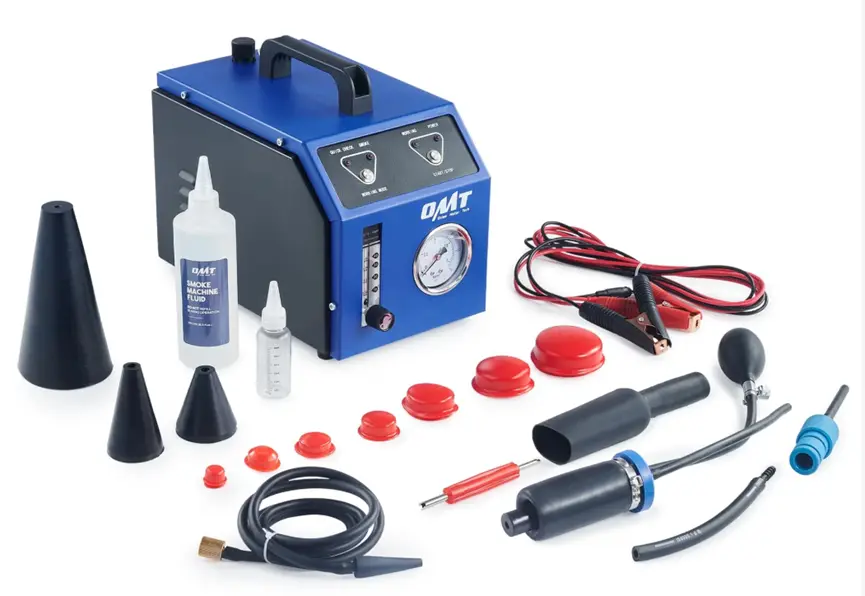Introduction
Your car is more than just an engine and wheels—it’s also full of hidden systems working to keep it efficient and eco-friendly. One of the most important, but least understood, is the EVAP system, short for Evaporative Emission Control System. While you might not think about it often, this system plays a big role in reducing pollution, protecting your health, and even saving you money at the pump.
What Is the EVAP System?
The EVAP system is designed to stop fuel vapors from escaping into the air. Instead of letting those vapors drift out of your gas tank, it captures and stores them until your engine is ready to burn them off.
Here are the main parts of the EVAP system in plain language:
- Fuel tank – where your gasoline is stored.
- Charcoal canister – a small container filled with activated charcoal that absorbs fuel vapors.
- Valves and hoses – direct vapors between the tank, canister, and engine.
- Sensors – monitor the system and alert your car’s computer if something isn’t working.
How Does the EVAP System Work?
The process is surprisingly simple:
- When fuel sits in your tank, it naturally creates vapors.
- Instead of escaping into the air, those vapors are captured and stored in the charcoal canister.
- When you start driving, the system opens valves that let the vapors travel into the engine.
- The engine then burns the vapors just like it burns gasoline.
This setup reduces air pollution and makes sure you’re not wasting any fuel.
Common EVAP System Issues
Like any car system, the EVAP setup can develop problems. Some of the most common include:
- Loose or damaged gas cap – often the simplest fix!
- Cracked hoses or leaks – fuel vapors can escape if lines are damaged.
- Faulty purge or vent valve – these valves control vapor flow and may fail over time.
- Charcoal canister issues – rarely, the canister itself can crack or clog.
If you’d like to troubleshoot further, take a look at this guide on 6 Ways to Easily Find EVAP Leak in Your Vehicle.
Signs of EVAP System Problems
How do you know if your EVAP system isn’t working? Watch for these clues:
- Check Engine Light – one of the most common triggers for this warning.
- Gasoline smell – especially around the vehicle when it’s parked.
- Failed emissions test – if your state requires one.
- Rough idling or lower fuel efficiency – in some cases.
Why the EVAP System Matters
It might seem like a small system, but the EVAP has a big impact. Here’s why it’s important:
- Protects the environment – keeps harmful fuel vapors out of the air.
- Helps you pass inspections – no one likes failing an emissions test.
- Improves efficiency – prevents fuel waste.
- Avoids costly repairs – ignoring small EVAP problems can lead to bigger issues.
What to Do If You Suspect an EVAP Issue
If you think something’s wrong, here’s a quick checklist:
- Check the gas cap – make sure it’s tight, or replace it if cracked.
- Get a diagnostic scan – an OBD-II scanner (or your mechanic) can read error codes.
- See a professional – if it’s more than a gas cap, a mechanic can pinpoint the problem.
For DIY enthusiasts who want to track down leaks at home, tools like the Orion Motor Tech’s automotive EVAP smoke machine make it much easier to locate even the smallest leaks in your system.
Conclusion
The EVAP system might not be something you see every day, but it’s working behind the scenes to keep your car efficient and environmentally friendly. From capturing fuel vapors to helping you pass emissions tests, it’s an essential part of modern vehicles.
Take care of the little things—like tightening your gas cap or getting regular checks—and you’ll keep your EVAP system running smoothly. It’s a small step that makes a big difference for your car, your wallet, and the air we all breathe.
Also Read-Robot Pool Cleaner Tech Unveiled: Beatbot Robotic Pool Cleaners—Features and Performance Breakdown

